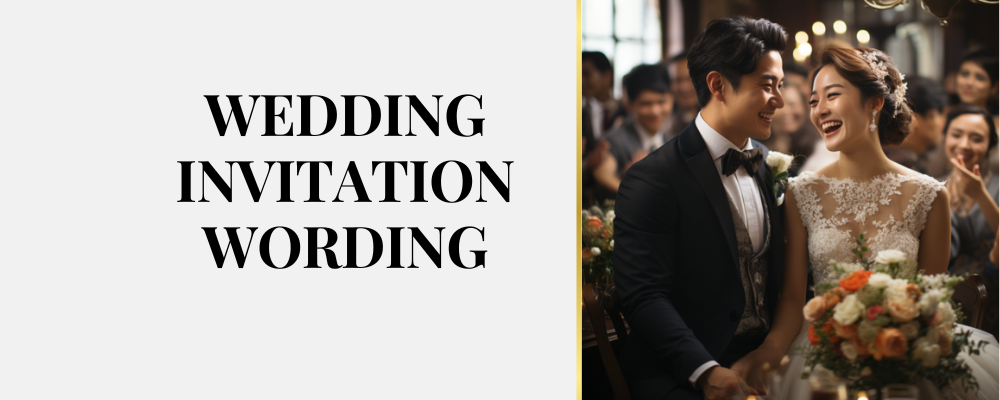
[ULTIMATE] Wedding Invitation Wording From CASUAL to FORMAL!
|
|
Time to read 6 min
|
|
Time to read 6 min
As an experienced event planner, I understand the crucial role that wedding invitations play in setting the tone for the big day. In this comprehensive guide, I've shared my knowledge on everything you need to know about wedding invitation wording, from casual to formal styles. We've covered design choices, paper options, and the various components of an invitation suite. I've also provided practical tips and etiquette advice to help you craft the perfect invitation that reflects your unique style and ensures your guests are well-informed and excited about your special day.
Couple's Names:
Date and Time:
Location:
Reception Information (Optional):
RSVP Details:
Host Line:
Couple's Names:
Date and Time:
Location:
RSVP Details:
Attire Information (Optional):
Additional Cards:
Special Instructions:
If there are any unique instructions for guests, such as parking information or dietary preferences, include them on a separate card.
Personalization:
Feel free to add personal touches that reflect your personalities and love story. Some couples include a brief love quote or a short note expressing their excitement.
Be Clear and Concise:
Use Formal or Casual Language:
Include Both Sets of Parents (if applicable):
Specify the Date and Time:
Provide Location Details:
Optional Elements:
RSVP Information:
Dress Code (if applicable):
Be Mindful of Grammar and Spelling:
Consider Cultural or Religious Traditions:
Keep It Consistent:
Check Invitation Etiquette:
Proofread and Get Feedback:
On a wedding invitation, you typically include essential details such as the hosts' names (if applicable), the names of the couple getting married, the date and time of the wedding, the venue, and RSVP information. Additional information like reception details, dress code, and special instructions may also be included.
A wedding invitation typically starts with a host line (if applicable) followed by the couple's names. For example, "Mr. and Mrs. John Smith request the pleasure of your company at the marriage of their daughter, Jane Marie Smith, to Michael James Johnson..."
Traditionally, the bride's name comes before the groom's name. For example, “Jane Marie Smith and Michael James Johnson.”
The tradition of listing the bride's name first on wedding invitations is a longstanding custom that reflects historical patriarchal norms. However, many modern couples choose to list names in alphabetical order or in a way that feels most natural to them, regardless of gender or tradition.
A short wedding invitation maintains the essential details while keeping the wording concise. For example: “Join us for the wedding of [Bride's Name] and [Groom's Name] on [Date] at [Time] at [Venue]. Reception to follow.”
The best marriage invitation message is one that reflects the couple's personality and the style of their wedding. It should be heartfelt, warm, and inviting. You can include a brief personal message expressing your excitement and love for your guests.
The tradition of listing the wife's name first on a wedding invitation is common, but it's not a strict rule. Couples can choose the order that feels most comfortable or meaningful to them.
It doesn't matter whose name comes first on a wedding invitation. Modern etiquette allows for flexibility, and couples can decide the order that best suits their preferences, values, and traditions.

